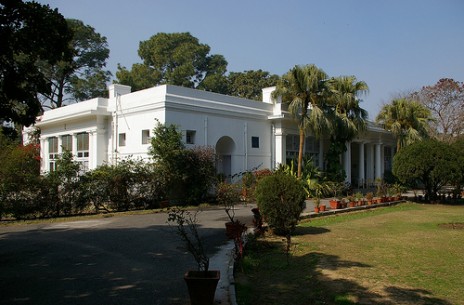|
Listen SouthDelhiFloors Podcast
|
The leafy neighbourhood of the country’s top politicians, bureaucrats and business leaders is set to shrink as Lutyens’ bungalow zone (LBZ) could make way for modern high-rises, if a Union urban development (UD) ministry plan gets approved.
The UD ministry has accepted recommendations of the Delhi Urban Arts Commission (DUAC) and decided to redraw the boundary of the Capital’s iconic bungalow zone.
It will soon send its report to the prime minister’s office (PMO). The final call rests with the PMO because any policy related to the LBZ has to have its approval.
According to the UD ministry’s plan, the new LBZ map will not have Bengali Market, Golf Links, Sardar Patel Marg, Panchsheel Marg, Jorbagh, parts of Mandir Marg and Ashoka Road, Sunder Nagar and portions of Chanakyapuri.

The LBZ comprises just 1.5% of Delhi’s 1,484 sq km territory but its location — the coveted heart of the Capital — makes all the difference. Here a few square feet of built-up area could run into crores of rupees.
Keeping out these eight areas from the LBZ, which has the most stringent building norms such as curbs on high-rises, will mean relaxing building bylaws to allow construction of multi-storey residential and commercial complexes.
Also, there’s a ban on construction of new buildings in the LBZ since 2003.
If the plan gets approved, planners see a real estate boom in the area.
“It will make a big difference. These are prime areas and real estate activity is set to pick. There will be an increase in supply of real estate,” said Anshuman Magazine, CMD of real estate consultancy firm CB Richard Ellis South Asia Pvt. Ltd.
The ministry’s proposal also includes drafting four areas into the LBZ —those in the vicinity of the Supreme Court, the north-west part of Feroze Shah Road and parts of Atul Grover and Hailey Road.
In May, the DUAC recommended in its report to the UD ministry that core areas which were part of the original LBZ — comprising the area in and around Rajpath — should not be tinkered with, but building norms should be relaxed in other areas of the zone.
Discussions on rationalising LBZ guidelines were on for the past several years but the UD ministry did not take a call fearing triggering a controversy. In 2007, the ministry rejected a similar report submitted by the DUAC.
Planners advise caution in redrawing the LBZ boundary. “It has to be done carefully without any consideration of monetisation of land in Lutyens’ zone. It should not be seen as an opportunity for densification of the area and property development,” said AK Jain, former planning commissioner, Delhi Development Authority (DDA).
But DDA officials are of the view that the existing low-density development is not sustainable since Delhi is starved for space.
Compared to some parts of east and Old Delhi, where approximately 1,100 to 1,600 people live per acre of space, the density in the bungalow zone is just 14-15 people because of the low-density development.
Source :














